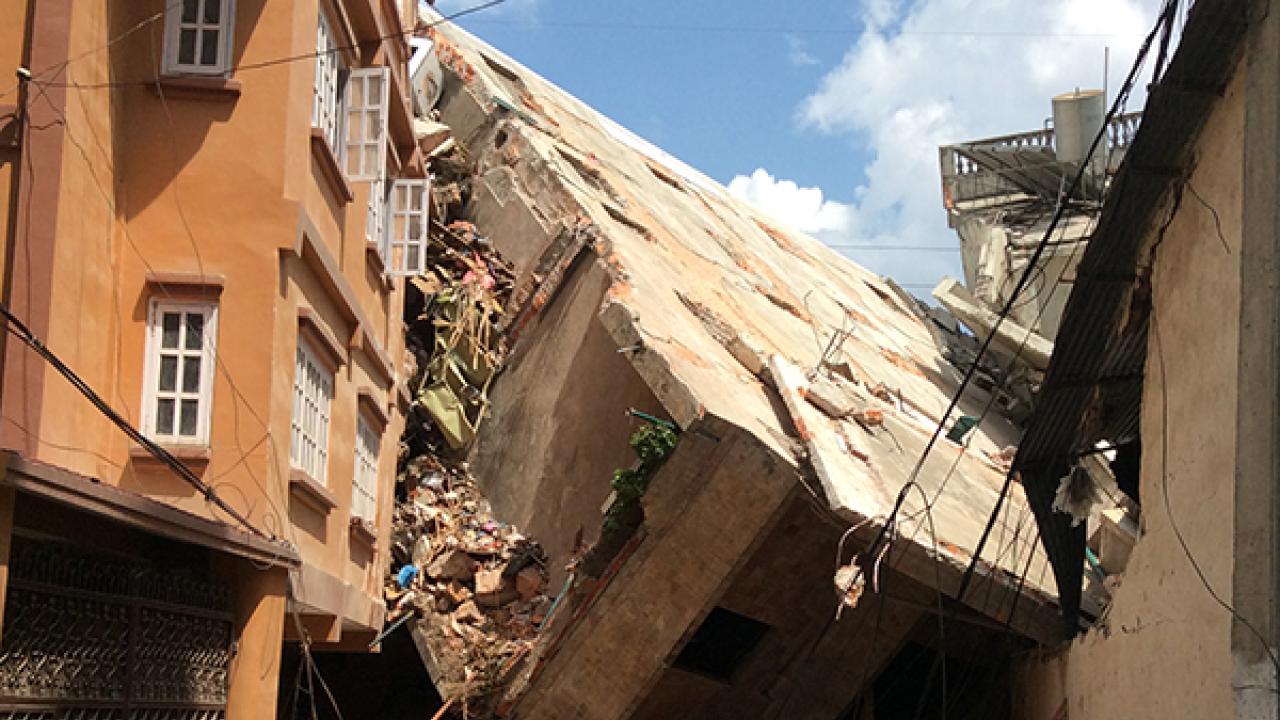
The deadly Gorkha earthquake that struck Nepal in April 2015 has added more strain under the Himalaya, the build-up of which could act as fuel for future great earthquakes in the region, according to research that appears in the latest issue of Nature Geoscience.
The research results came from a collaborative earthquake-response project that monitored Nepal's post-seismic deformation following the 2015 quake. Coordinated by ICTP geophysicist Karim Aoudia, Roger Bilham from the Cooperative Institute for Research in Environmental Sciences (CIRES), and Bishal Upreti from Tribhuvan University and the Nepal Academy of Science and Technology (NAST), the project used existing and new GPS instruments that were deployed in the epicentral area, some of which were donated by ICTP.
The Nepal 2015 earthquake, like other historical earthquakes in the region, failed to rupture the frontal part of the fault that dives beneath the Himalayas, south of Kathmandu. Based on GPS readings that showed limited post-seismic deformation on the frontal part of the fault, along with a rigorous analysis of historical earthquake ruptures, the researchers believe that a significant amount of relict strain prevails throughout the main Himalayan fault and could be released in a future, powerful earthquake larger than the recent Gorkha one.
The paper, titled 'Himalayan strain reservoir inferred from limited afterslip following the Gorkha earthquake', appears as an advance online publication on Nature Geoscience's website (doi:10.1038/ngeo2734).
“The knowledge we now have from this current research gives us a better understanding of the physics of great Himalayan earthquakes,” says Aoudia. That new knowledge began after he and his research collaborators organized a workshop in Kathmandu immediately after the 2015 earthquake to understand its dynamics. The outcomes of that meeting, he says, along with the ensuing data collection and research, has helped the researchers form a clearer picture of the characteristics of Himalayan earthquakes.
“The Gorkha earthquake was not a complete surprise per se, but many of its detailed features were indeed surprising. Now, thanks to our post-seismic measurements and modeling, along with an analysis of the earthquake history of the region, we suggest that great Himalayan earthquakes may start with a magnitude similar to the 2015 earthquake (7.8), and every now and then cascade into larger magnitude earthquakes measuring greater than 8.5,” Aoudia explains.
Nepal has been the focus of ongoing, collaborative research between ICTP's Earth System Physics (ESP) section, Tribhuvan University and NAST. Located in a seismically volatile region—the country sits above the collision zone of the massive Indian and Eurasian plates—Nepal offers a geologic showcase for tectonics. Within hours after the 25 April 2015 earthquake, ICTP had reached out to its Kathmandu colleagues with offers of training and research support. Aoudia coordinated the donation of GPS instruments to monitor Nepal's post-seismic deformation; the equipment arrived just days after the earthquake, thanks to the assistance of the UNESCO field office in Kathmandu.
Aoudia leads ICTP's solid-Earth geophysics research and has years of experience training scientists from earthquake-prone areas in the developing world. He coordinates ongoing research projects, often involving PhD students, in order to build networks of scientists and improve knowledge. His research group currently hosts Surya Pachhai, a postdoctoral fellow from Nepal who is a former ICTP Diploma student now working on a joint project between ICTP, the University of Cambridge and Caltech.
















